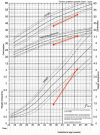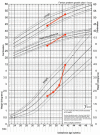Continuous Glucose Monitoring in Transient Neonatal Diabetes Mellitus-2 Case Reports and Literature Review
- PMID: 37443665
- PMCID: PMC10340365
- DOI: 10.3390/diagnostics13132271
Continuous Glucose Monitoring in Transient Neonatal Diabetes Mellitus-2 Case Reports and Literature Review
Abstract
Neonatal diabetes mellitus is a rare genetic disease that affects 1 in 90,000 live births. The start of the disease is often before the baby is 6 months old, with rare cases of onset between 6 months and 1 year. It is characterized by low or absent insulin levels in the blood, leading to severe hyperglycemia in the patient, which requires temporary insulin therapy in around 50% of cases or permanent insulin therapy in other cases. Two major processes involved in diabetes mellitus are a deformed pancreas with altered insulin-secreting cell development and/or survival or faulty functioning of the existing pancreatic beta cell. We will discuss the cases of two preterm girls with neonatal diabetes mellitus in this research. In addition to reviewing the literature on the topic, we examined the different mutations, patient care, and clinical outcomes both before and after insulin treatment.
Keywords: glucose monitoring; monogenetic diabetes; neonatal diabetes.
Conflict of interest statement
The authors declare no conflict of interest.
Figures
References
-
- Demirbilek H., Arya V.B., Ozbek M.N., Houghton J.A.L., Baran R.T., Akar M., Tekes S., Tuzun H., Mackay D.J., Flanagan S.E., et al. Clinical characteristics and molecular genetic analysis of 22 patients with neonatal diabetes from the South-Eastern region of Turkey: Predominance of non-KATP channel mutations. Eur. J. Endocrinol. 2015;172:697–705. doi: 10.1530/EJE-14-0852. - DOI - PMC - PubMed
-
- Grulich-Henn J., Wagner V., Thon A., Schober E., Marg W., Kapellen T.M., Haberland H., Raile K., Ellard S., Flanagan S.E., et al. Entities and frequency of neonatal diabetes: Data from the diabetes documentation and quality management system (DPV) Diabet. Med. 2010;27:709–712. doi: 10.1111/j.1464-5491.2010.02965.x. - DOI - PubMed
Publication types
LinkOut - more resources
Full Text Sources



